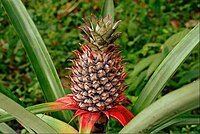
Disease management in two sympatric Apterostigma fungus‐growing ants for controlling the parasitic fungus Escovopsis
Sign Up to like & getrecommendations! Published in 2021 at "Ecology and Evolution"
DOI: 10.1002/ece3.7379
Abstract: Abstract Antagonistic interactions between host and parasites are often embedded in networks of interacting species, in which hosts may be attacked by competing parasites species, and parasites may infect more than one host species. To… read more here.
Keywords: two sympatric; growing ants; escovopsis; host ... See more keywords

You eat what you find – Local patterns in vegetation structure control diets of African fungus‐growing termites
Sign Up to like & getrecommendations! Published in 2022 at "Ecology and Evolution"
DOI: 10.1002/ece3.8566
Abstract: Abstract Fungus‐growing termites and their symbiotic Termitomyces fungi are critically important carbon and nutrient recyclers in arid and semiarid environments of sub‐Saharan Africa. A major proportion of plant litter produced in these ecosystems is decomposed… read more here.
Keywords: fungus growing; woody plant; growing termites; plant ... See more keywords

Fungal nutrition allocation enhances mutualism with fungus-growing termite
Sign Up to like & getrecommendations! Published in 2019 at "Fungal Ecology"
DOI: 10.1016/j.funeco.2019.04.001
Abstract: Abstract Fungal nodules and aged fungus gardens are products of termite fungiculture systems, and are the diets of termites. To understand the nutrition flow in fungiculture, we quantified the number and mass of fungal nodules… read more here.
Keywords: fungus gardens; mutualism fungus; growing termite; fungal nodules ... See more keywords

Bacterial Associates of a Desert Specialist Fungus-Growing Ant Antagonize Competitors with a Nocamycin Analog.
Sign Up to like & getrecommendations! Published in 2022 at "ACS chemical biology"
DOI: 10.1021/acschembio.2c00187
Abstract: Fungus-growing ants are defended by antibiotic-producing bacterial symbionts in the genus Pseudonocardia. Nutrients provisioned by the ants support these symbionts but also invite colonization and competition from other bacteria. As an arena for chemically mediated… read more here.
Keywords: fungus growing; associates desert; bacterial associates; desert specialist ... See more keywords

Imaging with Mass Spectrometry of Bacteria on the Exoskeleton of Fungus-Growing Ants.
Sign Up to like & getrecommendations! Published in 2017 at "ACS chemical biology"
DOI: 10.1021/acschembio.7b00038
Abstract: Mass spectrometry imaging is a powerful analytical technique for detecting and determining spatial distributions of molecules within a sample. Typically, mass spectrometry imaging is limited to the analysis of thin tissue sections taken from the… read more here.
Keywords: mass spectrometry; growing ants; mass; fungus growing ... See more keywords

Genomic diversification of the specialized parasite of the fungus-growing ant symbiosis.
Sign Up to like & getrecommendations! Published in 2022 at "Proceedings of the National Academy of Sciences of the United States of America"
DOI: 10.1073/pnas.2213096119
Abstract: Fungi shape the diversity of life. Characterizing the evolution of fungi is critical to understanding symbiotic associations across kingdoms. In this study, we investigate the genomic and metabolomic diversity of the genus Escovopsis, a specialized… read more here.
Keywords: fungus growing; specialized parasite; growing ant; escovopsis ... See more keywords

Amycolatopsis from Desert Specialist Fungus-Growing Ants Suppresses Contaminant Fungi Using the Antibiotic ECO-0501
Sign Up to like & getrecommendations! Published in 2023 at "Applied and Environmental Microbiology"
DOI: 10.1128/aem.01838-22
Abstract: Animal hosts often benefit from chemical defenses provided by microbes. These molecular defenses are a potential source of novel antibiotics and offer opportunities for understanding how antibiotics are used in ecological contexts with defined interspecies… read more here.
Keywords: eco 0501; fungus growing; amycolatopsis; desert ... See more keywords

Fungus-Growing Ant's Microbial Interaction of Streptomyces sp. and Escovopsis sp. through Molecular Networking and MALDI Imaging
Sign Up to like & getrecommendations! Published in 2019 at "Natural Product Communications"
DOI: 10.1177/1934578x1901400117
Abstract: Microbes associated with fungus-growing ants represent a poorly explored source of natural products. In this study, we used mass spectrometry-based dereplication techniques for identifying a set of secondary metabolites produced during the microbial interaction between… read more here.
Keywords: interaction streptomyces; maldi imaging; microbial interaction; growing ant ... See more keywords

Non-Inseminated Queens Have Worker-Like Behaviors in Colonies of Fungus-Growing Ants, Mycetomoellerius turrifex Wheeler (Attini, Hymenoptera)
Sign Up to like & getrecommendations! Published in 2020 at "Sociobiology"
DOI: 10.13102/sociobiology.v67i3.5773
Abstract: In eusocial Hymenoptera such as ants, bees, and wasps, the queen numbers are fundamentally important to maintain the social systems. In Texas, USA, a fungus growing ant, Mycetomoellerius turrifex Wheeler (1903) (the genus name was … read more here.
Keywords: mycetomoellerius turrifex; worker like; non inseminated; inseminated queens ... See more keywords

Fungus-Growing Ants: Models for the Integrative Analysis of Cognition and Brain Evolution
Sign Up to like & getrecommendations! Published in 2020 at "Frontiers in Behavioral Neuroscience"
DOI: 10.3389/fnbeh.2020.599234
Abstract: Agents of selection for behavioral responses to abiotic, biotic, and social environments are described as cognitive challenges. Research integrating behavior, ecology, and brain evolution has generated a growing literature—and sometimes controversy—over inferences made from correlating… read more here.
Keywords: fungus growing; evolution; cognition brain; brain evolution ... See more keywords

Host-Specific Diversity of Culturable Bacteria in the Gut Systems of Fungus-Growing Termites and Their Potential Functions towards Lignocellulose Bioconversion
Sign Up to like & getrecommendations! Published in 2023 at "Insects"
DOI: 10.3390/insects14040403
Abstract: Simple Summary Termites represent a unique and highly efficient system for lignocellulose bioconversion. The highly efficient lignocellulolytic systems are achieved through contributions from gut bacterial symbionts. Despite extensive research, the complete picture of bacterial diversity… read more here.
Keywords: fungus growing; lignocellulose bioconversion; growing termites; diversity ... See more keywords